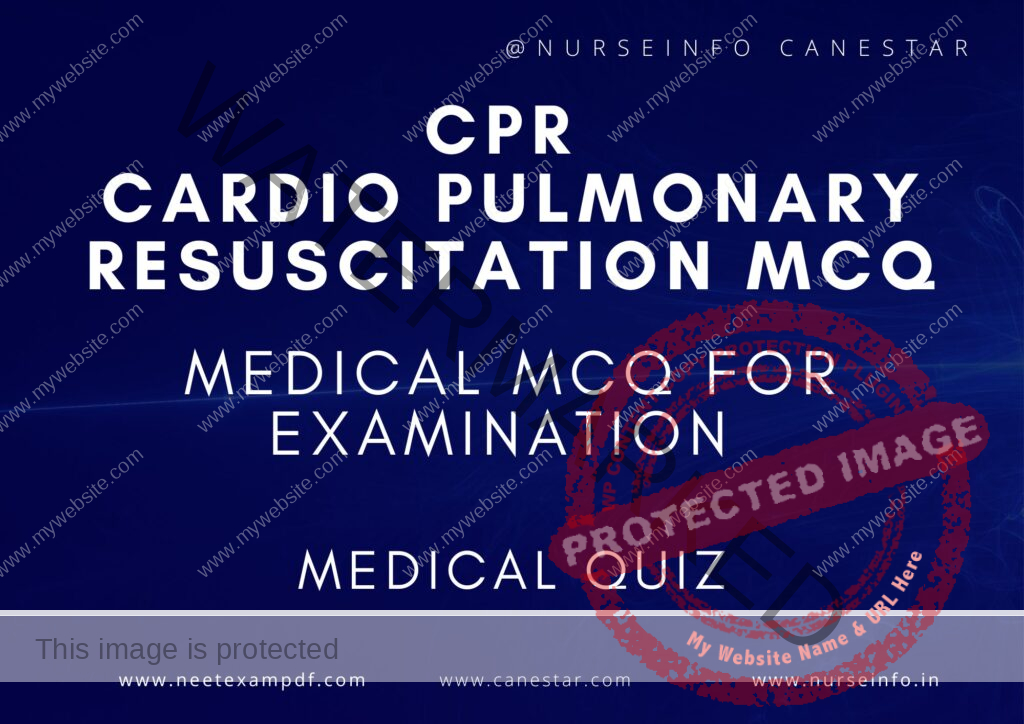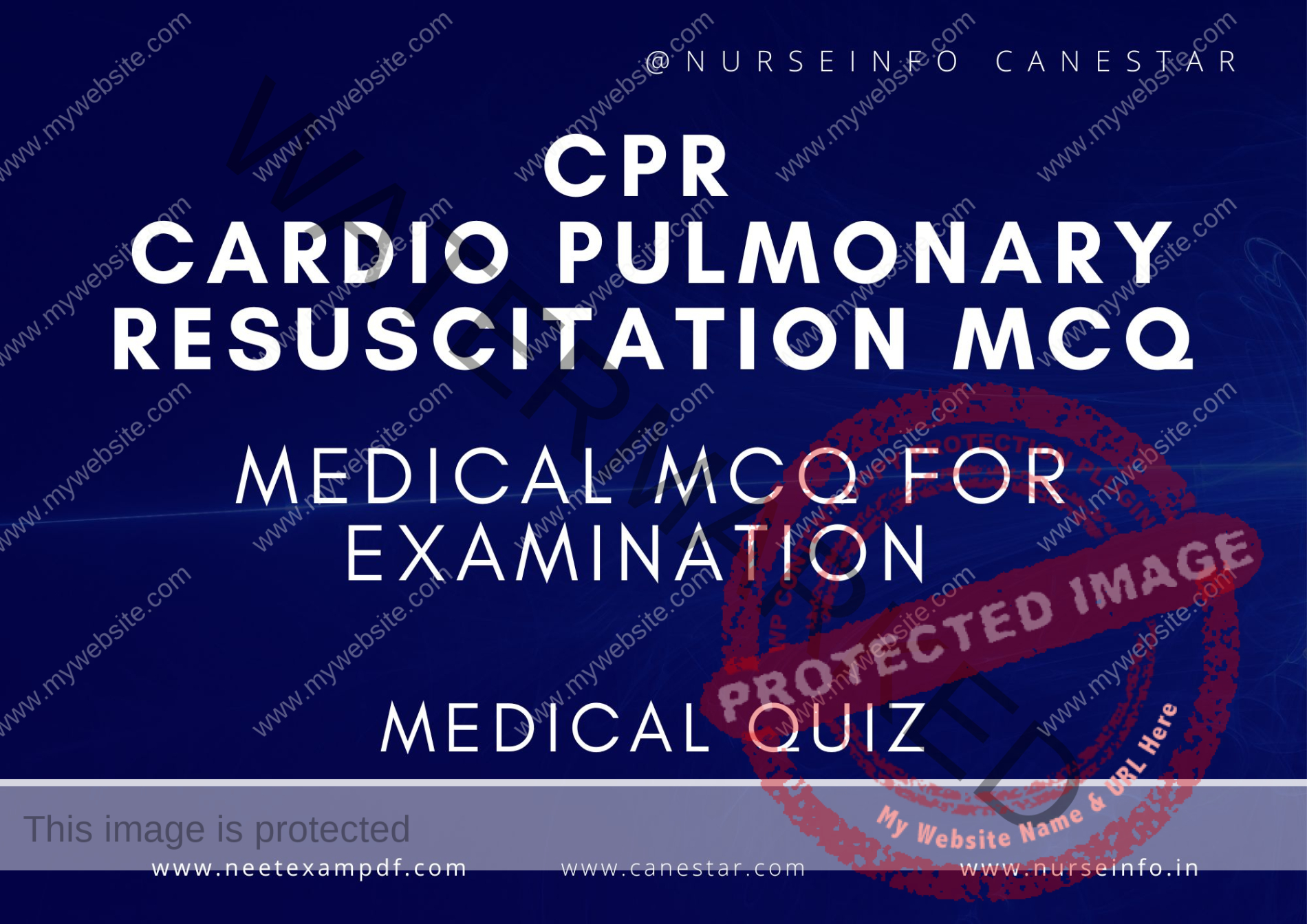CPR – CARDIO PULMONARY RESUSCITATION IN EMERGENCY MEDICINE AND ICU MCQ – CPR QUIZ FOR HEALTH PROFESSIONALS
These mcqs are prepared exclusively for medical professionals for exam preparation. MCQ is helpful to remember the concept on CPR in ICU or emergency medicine. This multiple choice questions are helpful for preparation for DHA, PROMETRIC, MOH, HAAD, NCLEX and other medical and nurse EXAMINATION
CPR is a critical life-saving technique that can make the difference between life and death in emergency situations, such as cardiac arrest.
What is CPR?
CPR stands for Cardiopulmonary Resuscitation. It is a combination of chest compressions and rescue breaths that helps maintain vital blood flow and oxygenation to the brain and other vital organs when the heart stops beating effectively.

1. What is the first step in the Basic Life Support (BLS) algorithm for an unresponsive patient?
a) Call for help
b) Start chest compressions
c) Open the airway
d) Check for breathing
Answer: a) Call for help
2. How deep should chest compressions be for an adult during CPR?
a) 1 inch
b) 2 inches
c) 2.4 inches
d) 3 inches
Answer: b) 2 inches
3. At what rate should chest compressions be delivered during CPR?
a) 60-80 compressions per minute
b) 80-100 compressions per minute
c) 100-120 compressions per minute
d) 120-140 compressions per minute
Answer: c) 100-120 compressions per minute
4. Which of the following is a correct ratio of compressions to breaths for a single rescuer performing CPR on an adult?
a) 15:2
b) 30:2
c) 50:2
d) 100:2
Answer: b) 30:2
5. When using an Automated External Defibrillator (AED), what is the first step after turning it on?
a) Apply the pads to the patient’s chest
b) Check for a pulse
c) Deliver a shock
d) Clear the area around the patient
Answer: a) Apply the pads to the patient’s chest
6. What is the recommended energy dose for defibrillation in adults using a biphasic defibrillator?
a) 50 joules
b) 100 joules
c) 150-200 joules
d) 300-360 joules
Answer: c) 150-200 joules
7. In a patient with a witnessed cardiac arrest and an initial rhythm of ventricular fibrillation (VF), the most effective initial intervention is:
a) Administration of epinephrine
b) Administration of amiodarone
c) Immediate defibrillation
d) Intubation
Answer: c) Immediate defibrillation
8. Which of the following drugs is most commonly used first during cardiac arrest?
a) Amiodarone
b) Epinephrine
c) Lidocaine
d) Atropine
Answer: b) Epinephrine
9. During resuscitation, what is the primary purpose of administering epinephrine?
a) To increase heart rate
b) To restore a normal rhythm
c) To increase coronary and cerebral perfusion pressure
d) To decrease myocardial oxygen demand
Answer: c) To increase coronary and cerebral perfusion pressure
10. What is the recommended dose of epinephrine for an adult in cardiac arrest?
a) 0.5 mg
b) 1 mg
c) 2 mg
d) 5 mg
Answer: b) 1 mg


